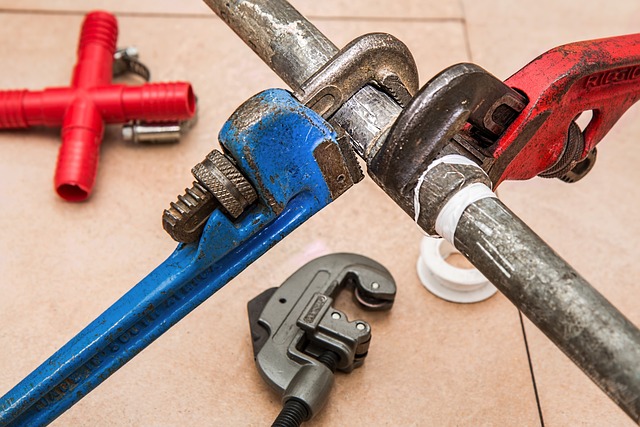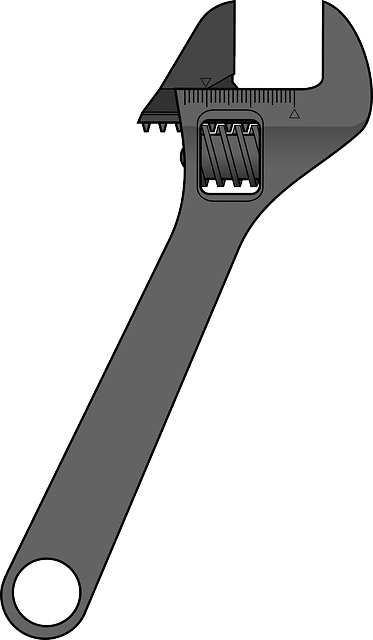Plumbing systems can degrade over time due to wear and tear, affecting washers, valves, and seals, which may lead to leaks or system failure. Regular inspections by plumbers are crucial for identifying early signs of deterioration, such as dry rot in washers, corrosion or sediment buildup in valves, and wear in seals. Swift action is necessary when these issues are detected to prevent water damage, conserve water, and maintain the safety of building occupants. Homeowners should monitor their plumbing for leaks, corrosion, and reduced water pressure, which could indicate the need for repairs or replacements. A professional plumber can effectively repair or replace faulty components, ensuring the plumbing system functions optimally and extending its lifespan. The article also provides a step-by-step guide on replacing a worn-out washer in a faucet, highlighting the necessity of shutting off the water supply and draining the faucet beforehand. This guide emphasizes careful removal of the old washer and precise installation of a new one that matches the original in type and size to avoid leaks. After assembly, it's important to check for leaks and, if necessary, seek professional plumbing assistance. Regular maintenance by a skilled plumber is key to preventing major issues and costly repairs in the future.
When it comes to maintaining the health of your home’s plumbing system, recognizing and addressing worn-out washers, valves, or seals is paramount. These critical components can deteriorate over time, leading to leaks, inefficiencies, and potential water damage. This comprehensive guide is designed to equip you with the knowledge and skills necessary to identify, replace, and maintain these elements effectively, ensuring the longevity and functionality of your plumbing infrastructure. From understanding the signs that indicate a need for replacement to step-by-step instructions on various replacements, including a washer in a faucet, a shower valve, or a toilet flapper, this article serves as an essential resource for both DIY enthusiasts and professional plumbers alike. With a focus on safety and precision, we’ll guide you through the necessary tools and materials, offer troubleshooting tips for common issues, and provide expert advice to maintain your plumbing system in peak condition.
- Understanding Worn-Out Washers, Valves, and Seals in Plumbing Systems
- Signs It's Time to Replace Your Plumbing Components
- Step-by-Step Guide to Replacing a Washer in a Faucet
Understanding Worn-Out Washers, Valves, and Seals in Plumbing Systems

When components such as washers, valves, and seals in plumbing systems degrade or become worn out, it can lead to a host of issues ranging from minor leaks to complete system failures. A plumber plays a crucial role in identifying these worn parts, which are integral to the functionality of the plumbing infrastructure. Washers, often made of rubber, plastic, or cork, serve as soft interfaces between pipes and fittings, ensuring a tight seal to prevent leaks. Over time, these washers can dry rot, harden, or become compressed, compromising their sealing ability. Similarly, valves, which regulate the flow of water, are subject to corrosion and sediment buildup that can affect their functionality. If a valve fails to open or close properly, it can lead to uncontrolled water flow, wasting resources or causing water damage. Seals, which prevent unwanted leaks at joints and connections, can also succumb to wear, allowing moisture to escape or intrude where it’s not wanted.
Recognizing the signs of worn-out washers, valves, and seals is essential for maintaining the efficiency and longevity of a plumbing system. A competent plumber will conduct regular inspections to catch these issues early on. By replacing these components promptly, a plumber can prevent more extensive damage, save water, and maintain the safety and health of the home or building’s occupants. Regular maintenance by a skilled plumber ensures that these critical parts perform as intended, maintaining the smooth operation of your plumbing system.
Signs It's Time to Replace Your Plumbing Components

When plumbing components such as washers, valves, or seals show signs of wear, it’s crucial to address the issue promptly to prevent more extensive damage and maintain the efficiency of your plumbing system. A seasoned plumber can identify these signs during routine inspections or when called upon to investigate persistent leaks or unusual water flow. Common indicators that it’s time to replace these parts include frequent leaks, visible corrosion or wear, and a noticeable decrease in water pressure. If you notice water stains around joints or see that your fixtures are not operating as effectively as they once did, it may be time to call in a professional plumber. They will assess the situation, replace the faulty components with new ones, and ensure everything is functioning correctly, thereby protecting your home from potential water damage and ensuring continued reliability of your plumbing system. Regular maintenance by a qualified plumber can extend the lifespan of your plumbing infrastructure and help you avoid costly repairs down the line.
Step-by-Step Guide to Replacing a Washer in a Faucet

When a washer in your faucet wears out, it can lead to leaks or reduced water flow, prompting the need for a replacement. This simple guide is designed to assist both homeowners and professional plumbers in effectively replacing a worn-out washer in a faucet without the need for advanced tools or expertise.
Start by shutting off the water supply to the faucet. You can usually do this by turning the valve under your sink clockwise until it stops. Afterward, open the faucet to drain any remaining water and prevent spills or leaks during disassembly. Next, remove the handle or cap that covers the washer by unscrewing it counterclockwise if it’s threaded or simply lifting it off if it’s held in place by clips.
With access to the faucet’s internal components, carefully remove the old washer. Use a pair of pliers to grip it, taking care not to damage the surrounding parts. Once removed, compare the dimensions of the existing washer with the new one to ensure a proper fit. The replacement washer should match the type and size required for your specific faucet model. After inserting the new washer, reassemble the faucet by reversing the steps you took to dismantle it. Hand-tighten all components to avoid over-tightening, which can strip threads or damage seals. Finally, turn on the water supply and check for leaks around the new washer. If everything is functioning correctly, you’ve successfully replaced your faucet’s washer, restoring proper water flow and sealing performance. For a smooth operation, consider consulting a professional plumber if you encounter any challenges during this process.
When faced with worn-out washers, valves, or seals within plumbing systems, prompt replacement is key to maintaining water integrity and system efficiency. Recognizing the signs of component fatigue, as detailed in this article, empowers homeowners and plumbers alike to address issues before they escalate. With the step-by-step guidance provided for replacing a washer in a faucet, readers can confidently undertake this common plumbing task. For more comprehensive repairs or when professional expertise is needed, consulting a licensed plumber remains the prudent course of action. Ensuring that your plumbing system operates smoothly and safely is not just about preventing leaks; it’s an essential aspect of home maintenance. Remember to approach any plumbing issue with care and precision to maintain the integrity of your system and protect your property from water damage.
